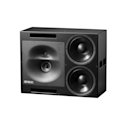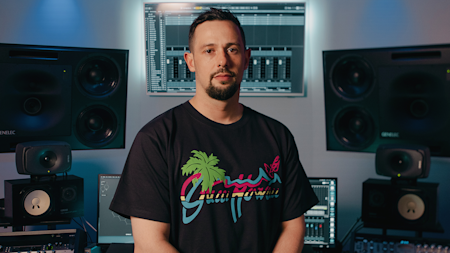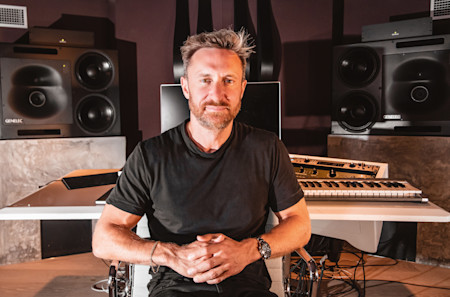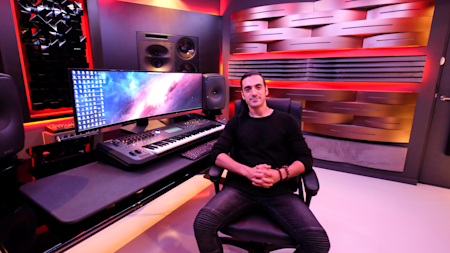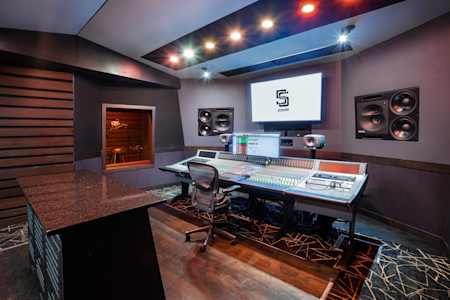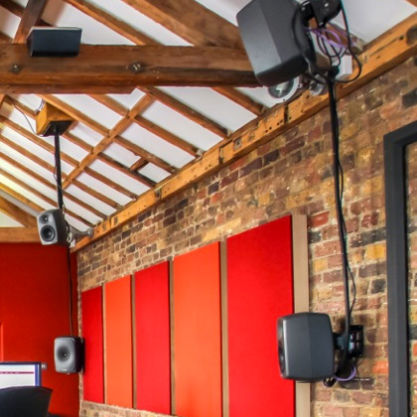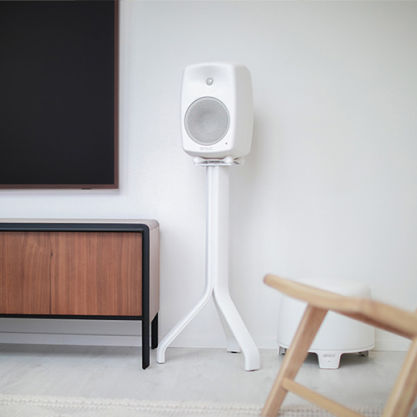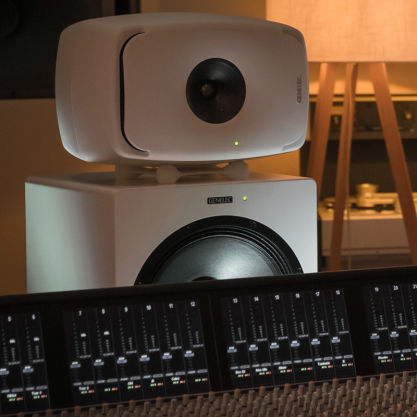1234A är utformad för att överträffa de allra högsta förväntningarna. Den aktiva studiomonitorn är förstahandsvalet för proffs och har alla egenskaper de kräver.
1234A
SAM™ Studio Monitor

Aktiva delningsfilter

Tekniken Directivity Control Waveguide (DCW™)

SPL
125 dB

Frekvensomfång
29 Hz - 21 kHz (-6 dB)

Mått
H 700 x W 890 x D 383 mm, (vy i tum)

Välkommen till ”the sweet spot”
1234A är utformad för att vara förstahandsvalet när det kommer till huvudhögtalare för stora inspelningsstudior, postproduktionslokaler och mastringstillämpningar. Den står högt i kurs när det gäller världens främsta referenslyssningssystem. 1234A kombinerar kraft med precision och erbjuder en neutral, ofärgad referensprestanda med enastående ljudspridning som skapar en bred och stabil ”sweet spot” – även för flera lyssnare på längre avstånd.
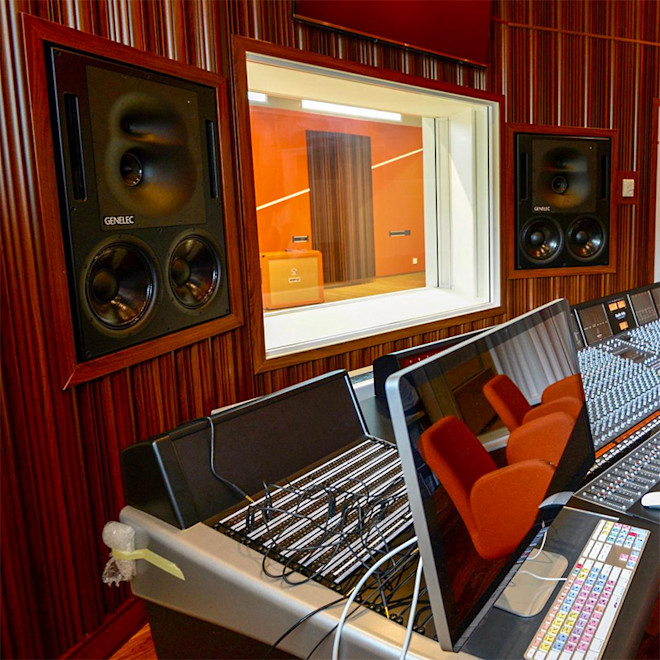
Perfekt överföring
Utöver sin verklighetstrogna transparens kan 1234A integreras med programvaran GLM, via vilken den kan konfigureras och kalibreras för din lyssningsmiljö. Detta kompenserar för negativ påverkan från rummet och ger en optimerad monitorlösning – från stereo till immersivt. Detta gör 1234A till det självklara valet för större professionella utrymmen som kräver perfekt överföring av mixar till andra studior och system.
Tekniska Specifikationer

SPL
125 dB

Förstärkareffekt
2 X 750 W Bass (Class D) + 400 W Midrange (Class D) + 250 W Treble (Class D)

Frekvensomfång
29 Hz - 21 kHz ("-6 dB")

Noggrannhet Frekvensomfång
± 2 dB (34 Hz - 20 kHz)

Storlek på högtalarelement
2 x ⌀ 305 mm Bass + ⌀ 125 mm Midrange + ⌀ 25 mm Treble (vy i tum)

Mått
H 700 x W 890 x D 383 mm, (vy i tum)

Vikt
73 kg / 160.9 lb

Anslutningar
1 x XLR Analog Input
1 x XLR AES/EBU Input
1 x XLR AES/EBU Output
2 x RJ45 Control
1234A SAM™ Studio Monitor
SAM™ Studio Monitor
Tekniska Specifikationer
1234A är utformad för att överträffa de allra högsta förväntningarna. Den aktiva studiomonitorn är förstahandsvalet för proffs och har alla egenskaper de kräver.
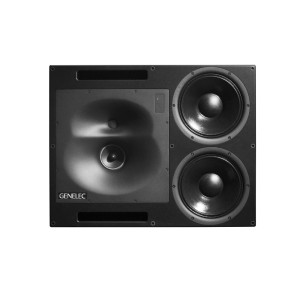
Specifikationer för system
Frekvensomfång
34 Hz - 20 kHz (± 2 dB)
Low cutoff -6 dB
29 Hz
High cutoff -6 dB
21 kHz
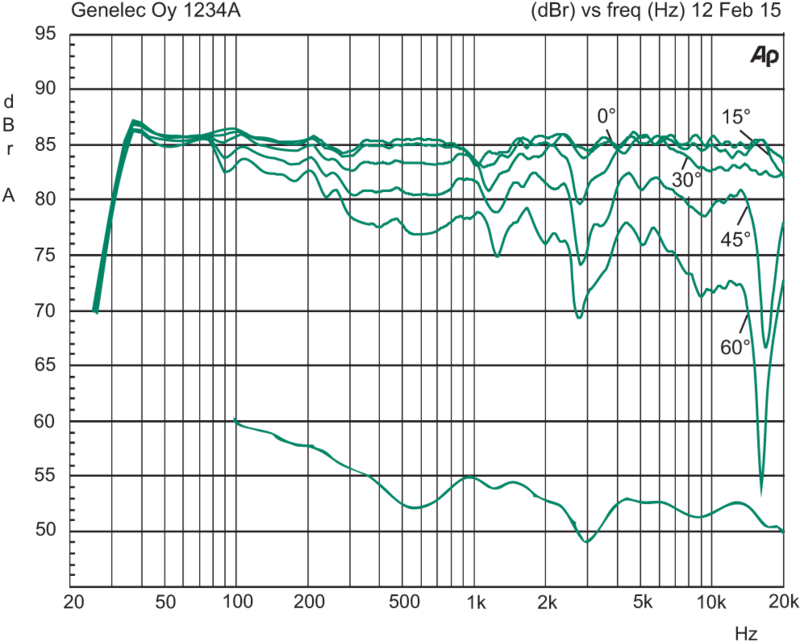
SPL
Peak SPL Maximum peak acoustic output per pair in a listening room with music material at 2 m.
≥130 dB
Short term max SPL Maximum short term sine wave acoustic output on axis in half space, averaged from 100 Hz to 3 kHz at 1 m.
≥125 dB
Long term max SPL Maximum long term RMS acoustic output in the same conditions with IEC weighted noise (limited by driver protection circuit) at 1 m.
≥120 dB
Egenljud
Egenljud Self generated noise level in free space at 2 m on axis (A-weighted).
≤0 dB SPL
Vikt
Vikt73 kg (160.9 lb)
Mått
Höjd
700 mm
Bredd
890 mm
Djup
383 mm
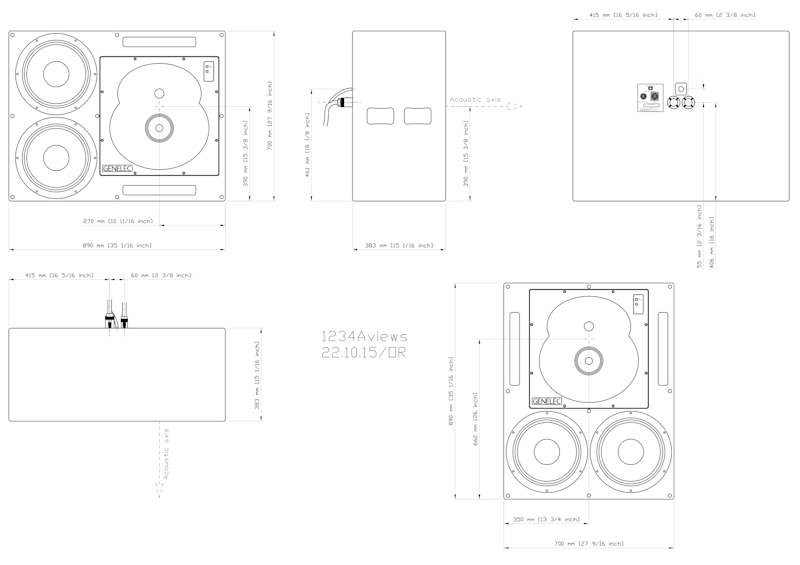
Kabinett
Material för kabinett
MDF
Typ av kabinett
Reflex port
Högtalarelement
Typ av element
Cone
Antal
2
Diameter
305 mm
Typ av element
Cone
Diameter
125 mm
Typ av element
Metal dome
Diameter
25 mm
Direktivitet

Harmonisk distorsion
> 200 Hz ≤0.5 %
Group delay
Latens vid höga frekvenser från ingång till akustisk utgång, mätt vid den analoga ingången:
Utökad faslinjäritet när GLM är OFF
__5.2 ms__
I Genelecs prestandagrafik beskrivs tiden för konvertering från en elektronisk insignal till den akustiska utsignalen i en Genelec-monitor av två faktorer - latens och gruppfördröjning. Gruppfördröjningsfaktorn kan avläsas i grafiken för en specifik frekvens. Den totala frekvensspecifika in-till-utgång-fördröjningen är en summa av latens- och gruppfördröjningsfaktorerna. För att förstå betydelsen av denna totala fördröjning, tänk på att flytta bort en högtalare med 1 meter skapar en ytterligare fördröjning på cirka 3 ms.
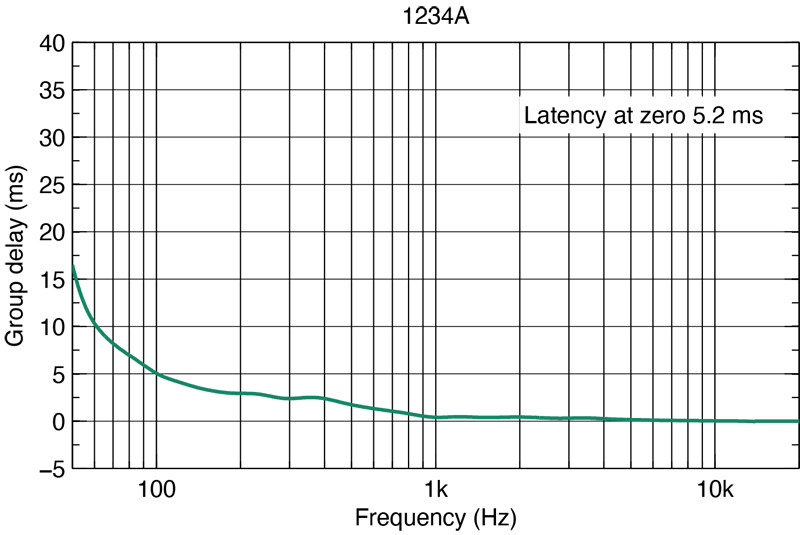
Avsnitt Förstärkare
Förstärkare
2 x 750 W Class D
3U rack mounted amplifier.
Höjd
132 mm
Bredd
483 mm
Djup
286 mm
Vikt
11.2 kg
(24.7 lb)
400 W Class D
3U rack mounted amplifier.
Höjd
132 mm
Bredd
483 mm
Djup
286 mm
Vikt
11.2 kg
(24.7 lb)
250 W Class D
3U rack mounted amplifier.
Höjd
132 mm
Bredd
483 mm
Djup
286 mm
Vikt
11.2 kg
(24.7 lb)
Nätspänning
100-120VAC / 220-230VAC 50/60Hz
Strömförbrukning
ISS Aktiverat
≤6 W
Inaktiv
≤40 W
Full effekt
2500 W
Avsnitt Signalbehandling
Anslutningar
Input Analog signal input connector XLR female, balanced 10 kOhm.
Input Digital signal input connector XLR female 110 Ohm.
Output Digital signal output / Thru connector XLR male 110 Ohm.
2 x Control Two CAT5 (RJ45) GLM Network connectors for computer control using the Genelec Loudspeaker Manager (GLM) software.
Produktvarianter
Produktkoder
För mer ingående teknisk information vänligen se produktens bruksanvisning
Nyckelteknologier

Aktiva delningsfilter

Tekniken Directivity Control Waveguide (DCW™)

Intelligent Signal Sensing (ISS™)

Optimerade förstärkare

Skyddskretsar

Smart Active Monitor-system (SAM™)
Aktiva delningsfilter vid låga signalnivåer.

Elektroniska delningsfilter gör det möjligt att dela upp ljudsignalen i separata frekvensband som kan dirigeras till enskilda slutsteg, vilka sedan kopplas till specifika givare som är optimerade för ett specifikt frekvensband.
Aktiva delningsfilter finns både i digitala och analoga varianter. Genelecs digitala aktiva delningsfilter har extra funktioner för signalbearbetning, såsom skydd av element, fördröjning och utjämning.
Genelecs analoga aktiva delningsfilter innehåller elektroniska komponenter som används vid låga signalnivåer som är lämpliga för ineffekten till slutstegen. Detta till skillnad från passiva delningsfilter som används vid höga signalnivåer från slutstegets uteffekt, vilket gör att de måste hantera höga strömstyrkor och i vissa fall även hög spänning.
I ett vanligt tvåvägssystem behöver de aktiva delningsfiltren två slutsteg – ett för baselementet och ett för diskantelementet.
Designen med aktiva delningsfilter har flera fördelar:
– Frekvensgången blir oberoende av eventuella dynamiska förändringar i elementets elektriska egenskaper eller nivå.
– Ökad flexibilitet och precision för att finjustera den utgående frekvensgången för de specifika elementen.
– Varje element har ett eget slutsteg och egen signalbearbetning. Detta isolerar varje element från de signaler som hanteras av övriga element, vilket minskar problemen med intermoduleringsdistorsion och förvrängning.
– Möjlighet att kompensera för känslighetsvariationer mellan elementen.
– Möjlighet att kompensera för avvikelser i frekvens- och fasåtergivning som är kopplade till elementets egenskaper inom det avsedda passbandet.
– Den platta frekvensgång som en högkvalitativ aktiv högtalare ger är resultatet av den kombinerande effekten av delningsfilterresponsen, slutstegsresponsen och elementresponsen i ett högtalarkabinett.
Genom att använda en aktiv teknik kan man justera frekvensgången och optimera hela högtalarsystemet i olika miljöer utan att behöva använda dyra externa equalizers. Slutresultatet är ett enklare, mer tillförlitligt, effektivt, konsekvent och precist aktivt högtalarsystem.
Tekniken Directivity Control Waveguide (DCW™) för platt återgivning både on-axis och off-axis.

1983 tog Genelec ett revolutionerande steg med utvecklingen av tekniken Directivity Control Waveguide (DCW™), som på den tiden användes i ett äggformat kabinett. Genelecs DCW-teknik har utvecklats och finjusterats i över 30 år och syftet är att förbättra prestandan för direktstrålande flervägsmonitorer betydligt.
DCW-tekniken formar den utgående vågfronten på ett kontrollerat sätt, vilket möjliggör förutsägbar anpassning av ljudets spridningsmönster. Målet är att begränsa spridningsvinkeln så att ströspridning minskas för att göra spridningen jämn och enhetlig. Det leder till en utomordentligt platt frekvensgång och en enhetlig kraftrespons. Den avancerade DCW-tekniken minimerar tidiga reflektioner och ger ett brett och stabilt lyssningsområde med korrekt ljudåtergivning både on-axis och off-axis.
Minimerade tidiga reflektioner och kontrollerad, konstant direktivitet har ytterligare en viktig fördel: frekvensbalansen i rummets efterklangsfält blir mer eller mindre likadan som det direkta ljudfältet från monitorhögtalarna. Detta leder till att monitorsystemets prestanda blir mindre beroende av rummets akustiska egenskaper.
Ljudbildens djup och bredd är viktiga aspekter i alla lyssningsmiljöer, och de är inte bara viktiga on-axis utan även off-axis. Detta hjälper inte bara ljudteknikern som gör jobbet, utan även andra som befinner sig i lyssningsområdet – och det är ofta många inblandade i större kontrollrum.
Huvudsakliga fördelar med DCW™-tekniken:
– Platt återgivning både on-axis och off-axis för ett större funktionellt lyssningsområde
– Ökat förhållande mellan direkt och reflekterat ljud för minskad färgning
– Förbättrad stereo- och ”soundstage”-ljudbild
– Ökad känslighet för drivenheterna på upp till 6 dB
– Ökad högsta ljudtryckskapacitet
– Minskad distorsion för drivenheterna
– Minskade kantdiffraktioner
– Övergripande minskad distorsion
Intelligent Signal Sensing (ISS™) minskar strömförbrukningen i standby-läge.

Intelligent Signal Sensing lanserades 2013 och uppfyller både EU:s ErP-direktiv och Genelecs egna hållbarhetsåtaganden.
ISS™-kretsen övervakar högtalarens signalingång och fastställer om den används eller inte. Om ISS-kretsen inte känner av någon ljudsignal under en viss tid försätter den automatiskt högtalaren i strömsparläge så att den drar mindre än 0,5 W. När en ingångssignal upptäcks aktiveras högtalaren direkt. Högtalaren kommer att börja spara ström direkt när arbetet pausas.
En ”ISS Disable”-brytare finns på baksidan av alla högtalare, bredvid rumskorrigeringsreglagen. När högtalarens huvudströmbrytare står på ”ON” aktiveras ISS™-funktionen (strömsparläge) automatiskt.
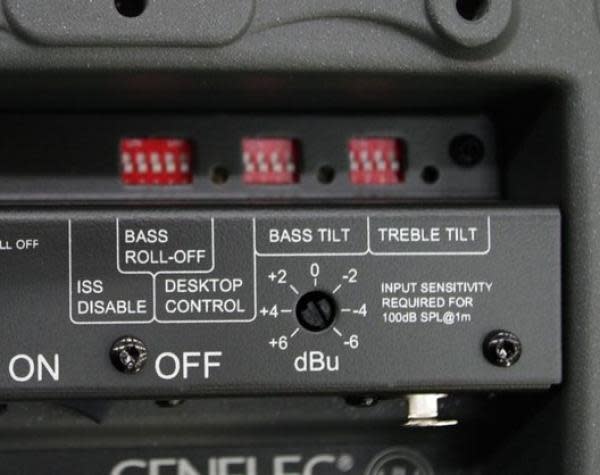
Om du inte vill använda ISS™-funktionen kan du stänga av den genom att sätta ”ISS Disable”-brytaren på den bakre panelen på ”ON”. I det här läget stängs högtalaren av och slås på endast med hjälp av huvudströmbrytaren.
Observera att man alltid kan stänga av högtalaren helt med huvudströmbrytaren.
Varje givare drivs av en egen optimerad förstärkare.
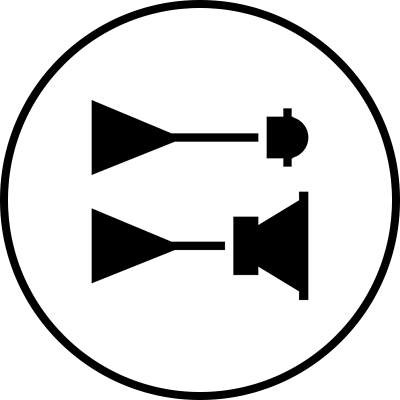
Elektroniska delningsfilter gör det möjligt att dela upp ljudsignalen i separata frekvensband som kan dirigeras till enskilda slutsteg, vilka sedan kopplas till specifika givare som är optimerade för ett specifikt frekvensband.
I ett vanligt tvåvägssystem behöver det aktiva delningsfiltret två slutsteg – ett för baselementet och ett för diskantelementet. Slutstegen är direkt kopplade till den aktiva högtalarens element, vilket gör att slutstegens belastning blir mycket enklare och välkänd. Varje elementspecifikt slutsteg har endast en begränsad frekvens att förstärka (slutsteget är placerat efter det aktiva delningsfiltret), vilket bidrar till att göra designen enkel.
Den aktiva designprincipen har flera fördelar:
– Slutstegen är direkt kopplade till högtalarens element, vilket maximerar kontrollen som utövas av slutstegens dämpning på elementets talspole. Detta reducerar i sin tur följderna av dynamiska förändringar i elementets elektriska egenskaper. Detta kan förbättra systemets transienta svar.
– Minskning av den uteffekt som krävs från slutsteget. Tack vare att ingen energi går förlorad i komponenterna till det passiva delningsfiltret minskas den uteffekt som krävs från slutsteget betydligt (med upp till 50 % i vissa fall), utan någon minskning av den akustiska uteffekten i högtalarsystemet. Detta kan bidra till att sänka kostnader och öka både ljudkvaliteten och systemets tillförlitlighet.
– Ingen förlust mellan förstärkaren och elementenheterna, vilket leder till maximal akustisk effektivitet.
– Den aktiva tekniken kan uppnå överlägsen ljudprestanda vs. storlek vs. lägre frekvensgräns.
– Alla högtalare levereras som ett fabrikskonfigurerat system (förstärkare, delningsfilterkomponenter, kabinett och elementsystem).
Sofistikerade skyddskretsar för drivenheter för säker användning.

När du arbetar med avancerad ljudproduktion är det otroligt viktigt att dina monitorsystem alltid är tillförlitliga och fungerar som de ska. Det främsta skälet till Genelecs framgångar inom sändningstillämpningar är våra produkters tillförlitlighet, och en viktig faktor bakom detta är de interna skyddskretsarna som finns i alla våra produkter – ända sedan 1978.
Skyddskretsarna förebygger fel på elementet genom att analysera signalnivåerna. Vid plötsliga toppar eller för höga nivåer under en längre tid minskas signalnivån automatiskt. Den här funktionen påverkar givetvis inte ljudkvaliteten på något sätt när högtalaren används inom ramen för dess specifikationer. Den hindrar endast avvikande ingångssignaler från att orsaka skada på högtalaren.
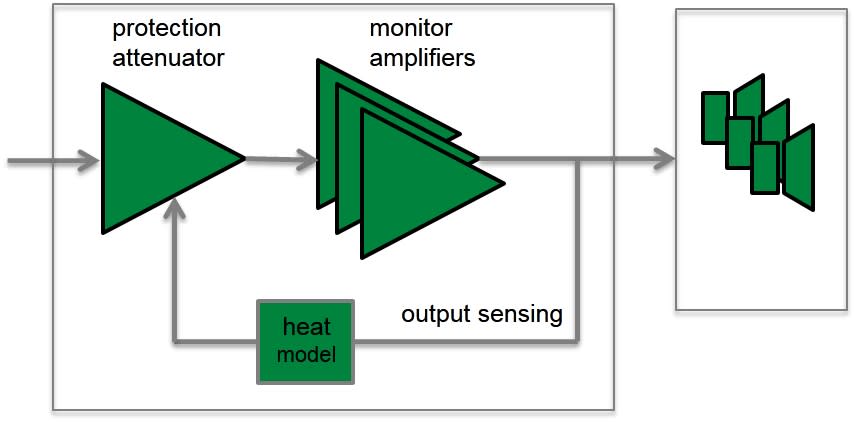
Skyddskretsarnas funktioner och fördelar:
– Minskar uteffektnivån vid behov (t.ex. när temperaturen vid elementets talspole uppnår ett gränsvärde), vilket förbättrar systemets tillförlitlighet betydligt
– Lämpliga skyddskretsar i alla högtalare och subwoofers gör det möjligt att maximera systemets utgående ljudnivå.
Uppkopplade Smart Active Monitor-system (SAM™) har funktioner för automatisk kalibrering till omgivningen.
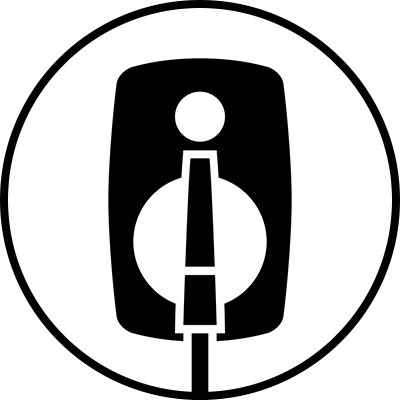
Under det senaste decenniet har mängden globalt mediainnehåll ökat enormt, vilket har lett till stora förändringar i hur uppkopplade företag hanterar den ökade arbetsbördan. En ökad mängd ljudproduktioner görs nu i mindre och mer begränsade arbetsutrymmen. Detta ökar de akustiska problemen och minskar lyssningstillförlitligheten. Samtidigt måste professionella ljudtekniker kunna räkna med ett tillförlitligt och tydligt monitorhögtalarsystem som återger ljudet neutralt och utan distorsion.
Genelecs avancerade SAM-system är baserade på de stabila elektroakustiska grunderna i serierna 1200, 8000 och 7000 och utgör dagens mest avancerade och anpassningsbara monitorlösningar. De är oumbärliga för professionella ljudtekniker tack vare att de automatiskt kan anpassa sig till den akustiska miljön och kompensera för nivåer, fördröjningar och avvikelser i rummet. SAM-system kan styras via Genelecs patenterade, uppkopplade programvara Genelec Loudspeaker Manager (GLM™) som hjälper dig att bygga upp ett flexibelt och tillförlitligt monitorsystem.
Programvaran GLM 3 är ett otroligt intuitivt och kraftfullt styrsystem som hanterar anslutningen till alla SAM-studiomonitorer och -subwoofers i nätverket – upp till 30 stycken. GLM 3 har funktioner för justering av nivåer och avståndsfördröjning samt flexibel rumskorrigeringsutjämning med det robusta och toppmoderna AutoCal™-systemet för automatisk kalibrering. Alla parametrar och inställningar sparas i systemets inställningsfiler eller i varje enskild monitorhögtalare eller subwoofer om GLM-nätverket måste kopplas från.
Dessutom kan SAM-systemets samtliga akustiska egenskaper optimeras för olika tillämpningar eller kundbehov. Även om högtalarna eller projekten måste flyttas mellan olika rum kan du lita på att SAM-tekniken ger bästa möjliga konsekvens vid lyssning, med en neutral ljudbild med låg distorsion.
Genelecs SAM-system erbjuder ett heltäckande, lösningsfokuserat och uppkopplat produktsortiment med stöd för analoga och digitala signaler i mer eller mindre alla arbetsmiljöer.
Referenser
Genelec UNIO Explained | How the ecosystem offers seamless in-room and personal headphone monitoring
Using GLM | Walkthrough
Using GLM | The foundations
Using GLM | Controlling GLM with MIDI
Using GLM | GRADE Room Acoustic Report
Using GLM | Calibration Group IDs
Using GLM | Accounts and product registration
Using GLM | The technical details
Genelec UNIO Explained | How the ecosystem offers seamless in-room and personal headphone monitoring
A quick guide to our UNIO Ecosystem – which offers audio engineers seamless bridging of in-room and personal headphone monitoring. https://genelec.com/UNIO
The Genelec UNIO Ecosystem – which combines the power of our renowned GLM, SAM Monitoring and Aural ID adaptive technologies – gives audio engineers the flexibility to work anywhere, anytime, from stereo to immersive. And now, with the new UNIO Personal Reference Monitoring (PRM) solution, audio professionals benefit from the pinpoint accuracy of our pioneering active monitoring headphone solution, which combines the 9320A SAM Reference Controller with uniquely factory-calibrated 8550A Professional Reference Headphones.
To learn more, visit https://genelec.com/UNIO
Hitta Din Återförsäljare











